Chapter 20: Romanticism
0.0(0)
Card Sorting
1/26
Earn XP
Description and Tags
Art History
AP Art History
Romanticism
Art
Romantic
Revival Architecture
Palace of Westminster
Houses of Parliament
Central Lobby
Westminster Hall
Romantic Painting
And There’s Nothing to Be Done
Francisco De Goya
Francisco De Goya
La Grande Odalisque
Jean-Auguste-Dominique Ingres
Liberty Leading the People
Eugène Delacroix
Slave Ship
Joseph Mallord William Turner
The Oxbow
Thomas Cole
Photography
Still Life in Studio
Daguerreotype
Daguerreotype
Calotype
12th
Study Analytics
Name | Mastery | Learn | Test | Matching | Spaced |
|---|
No study sessions yet.
27 Terms
1
New cards
Enlightenment
Romantics reacted against _____, advocating for trusting the heart over the head.
2
New cards
Romantic artists
They sought pleasure in refined things or audacious adventures, and were influenced by the extremes of human endeavor
3
New cards
Photography
It was the greatest artistic invention of the period, but was initially not seen as a form of art
4
New cards
Charles Barry
A classical architect; he accounts for the regularity of plan in the Palace of Westminster
5
New cards
Augustus Pugin
A Gothic architect, added Gothic architectural touches to the structure of the Palace of Westminster
6
New cards
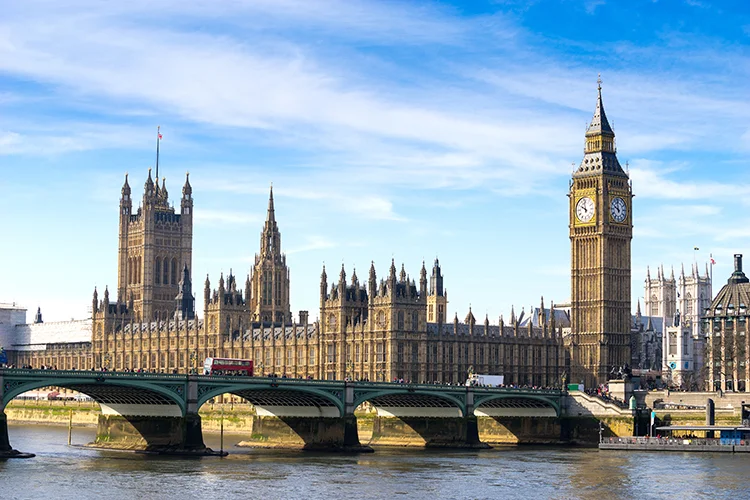
Palace of Westminster (Houses of Parliament)
* By Charles Barry and Augustus Pugin (1840–1870)
* The building holds the two chambers of the United Kingdom’s government
* Enormous structure of 1,100 rooms, 100 staircases, 2 miles of corridors.
* building is a reaction against art as a mass-produced product of the Industrial Revolution
* The building holds the two chambers of the United Kingdom’s government
* Enormous structure of 1,100 rooms, 100 staircases, 2 miles of corridors.
* building is a reaction against art as a mass-produced product of the Industrial Revolution
7
New cards

Big Ben
A clock tower; in a sense a village clock for all of England.
8
New cards

Central Lobby
* Situated between the House of Commons and the House of Lords.
* Meant to be a space where constituents can meet their member of Parliament.
* Meant to be a space where constituents can meet their member of Parliament.
9
New cards

Westminster Hall
* When the old Houses of Parliament burned to the ground, this hall survived and became the last vestige of the medieval parliament building.
* Perpendicular Gothic style of this hall inspired the design of the Houses of Parliament.
* Perpendicular Gothic style of this hall inspired the design of the Houses of Parliament.
10
New cards
The sublime
any cathartic experience from the catastrophic to the intellectual that causes the viewer to marvel in awe, wonder, and passion
11
New cards
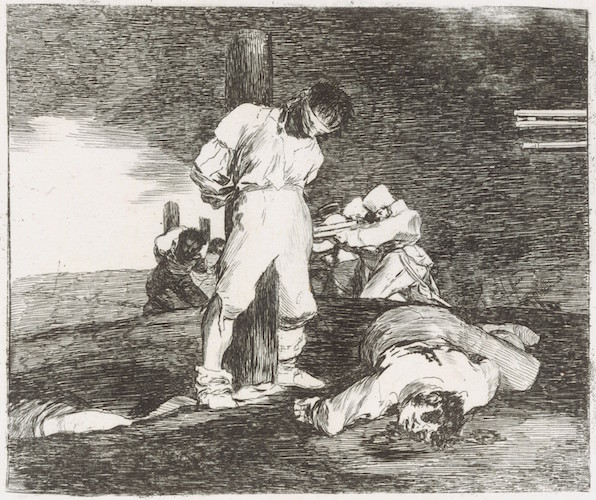
And There’s Nothing to Be Done (Y no hai remedio)
* By Francisco De Goya (1863)
* from The Disasters of War (Les Desastres de la Guerra), Plate 15
* used a combination of etching and drypoint.
* Bitterly ironic and sardonic.
* Central figure is seen in a Christ-like pose.
* from The Disasters of War (Les Desastres de la Guerra), Plate 15
* used a combination of etching and drypoint.
* Bitterly ironic and sardonic.
* Central figure is seen in a Christ-like pose.
12
New cards
Fatal Consequences of Spain’s Bloody War with Bonaparte and Other Emphatic Caprices
Original title of “And There’s Nothing to Be Done (Y no hai remedio)”
13
New cards
Caprice
usually a work of art that is an architectural fantasy; more broadly any work that has a fantasy element
14
New cards
Drypoint
an engraving technique in which a steel needle is used to incise lines in a metal plate. The rough burr at the sides of the incised lines yields a velvety black tone in the print
15
New cards
Odalisque
a woman slave in a harem
16
New cards
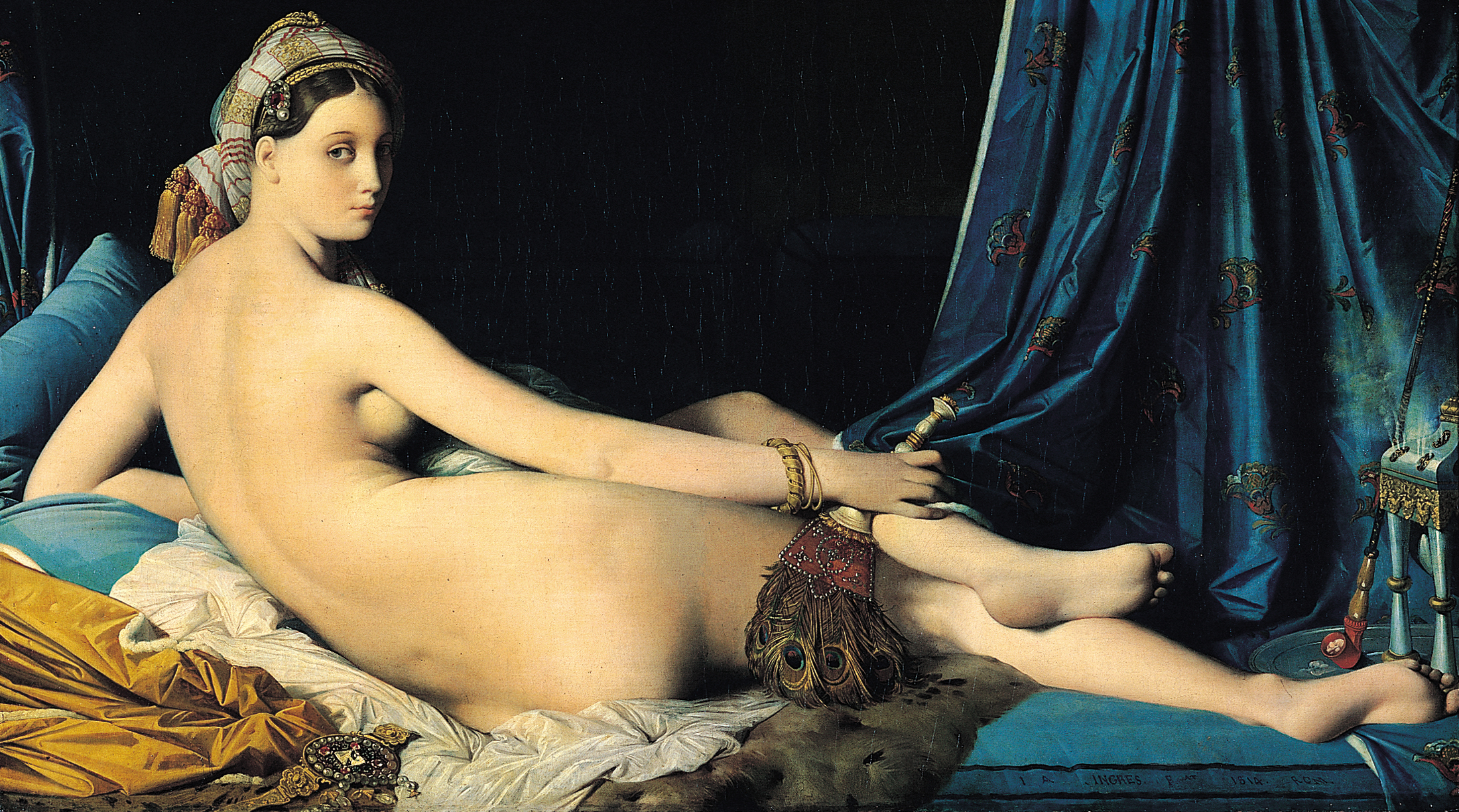
**La Grande Odalisque**
* By Jean-Auguste-Dominique Ingres (1814)
* Commissioned by Caroline Murat, Napoleon’s sister, Queen of Naples.
* Raphael-like face.
* Not a traditional frontal nude.
* Commissioned by Caroline Murat, Napoleon’s sister, Queen of Naples.
* Raphael-like face.
* Not a traditional frontal nude.
17
New cards
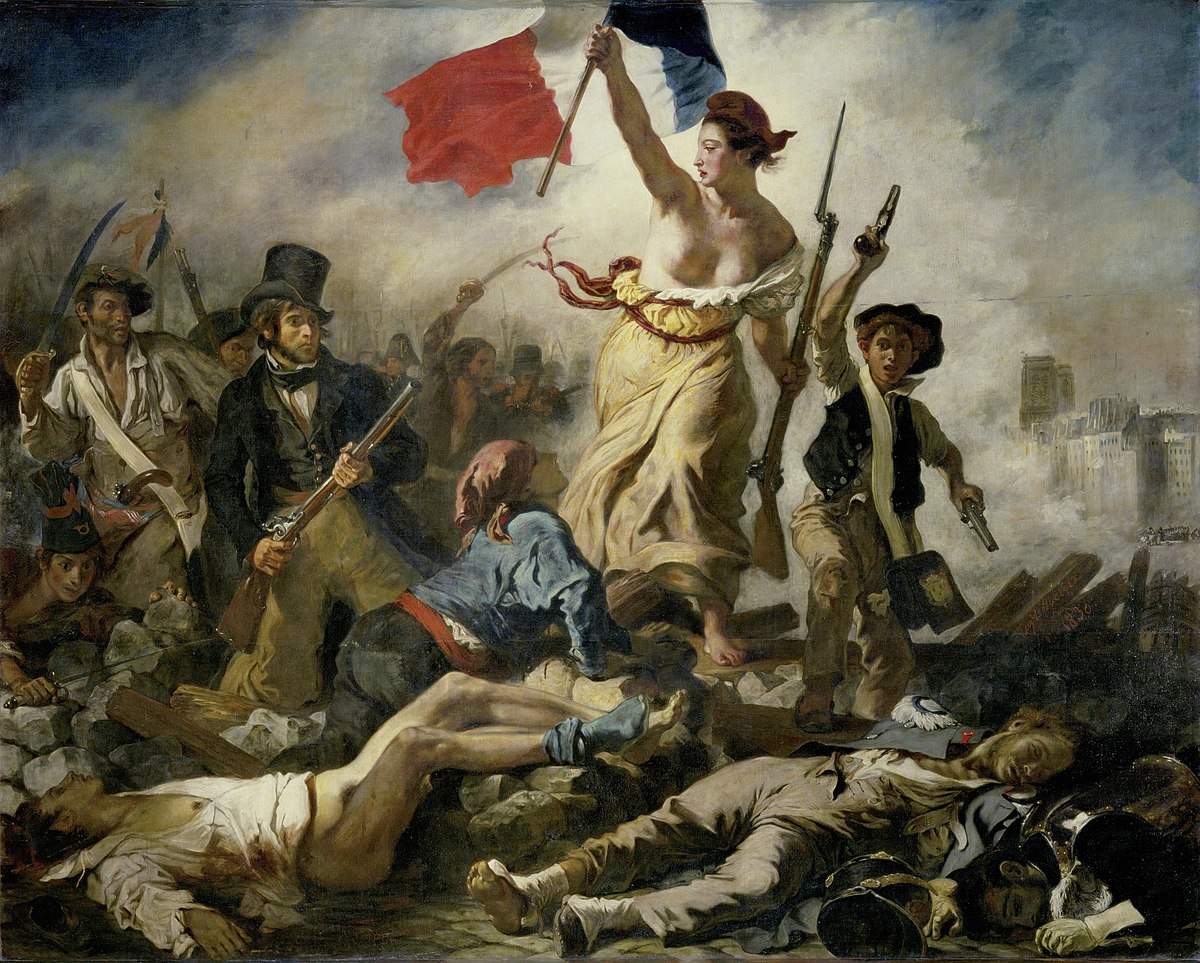
Liberty Leading the People
* By Eugène Delacroix (1830)
* Red/white/blue (colors of the French flag) echo throughout the painting.
* The painting symbolically depicts the July Revolution of 1830;
* Exhibited at the Salon of 1831 and then acquired by the French state
* Red/white/blue (colors of the French flag) echo throughout the painting.
* The painting symbolically depicts the July Revolution of 1830;
* Exhibited at the Salon of 1831 and then acquired by the French state
18
New cards
Slave Ship
* By Joseph Mallord William Turner (1840)
* Based on a true story; slaves were insured against accidental drowning
* Nature responds to the inhumanity of the slave trade.
* Based on a true story; slaves were insured against accidental drowning
* Nature responds to the inhumanity of the slave trade.
19
New cards
Thomas Clarkson
Turner’s painting was inspired by an account of the scandal published in a book by ____, which had been reprinted in 1839.
20
New cards
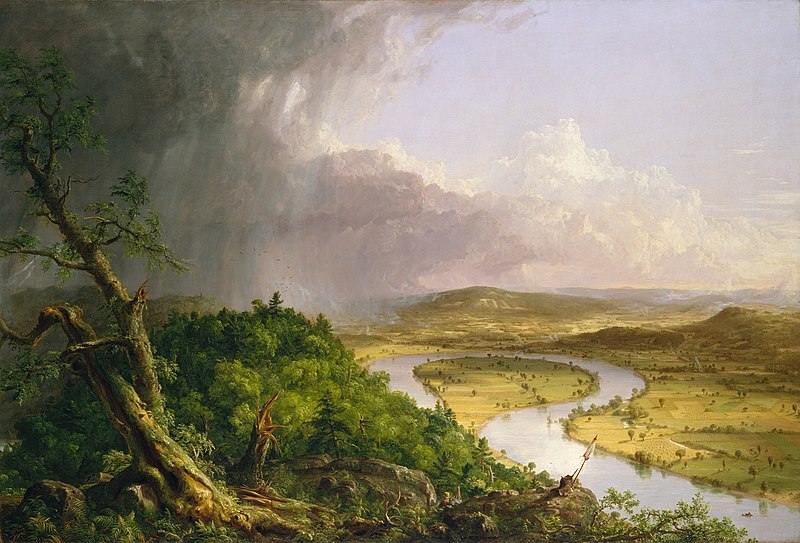
The Oxbow
* By Thomas Cole (1836)
* The View from Mount Holyoke, Northampton, Massachusetts, after a Thunderstorm
* Painted as reply to a British book that alleged that Americans had destroyed a wilderness with industry.
* Manifest Destiny.
* The View from Mount Holyoke, Northampton, Massachusetts, after a Thunderstorm
* Painted as reply to a British book that alleged that Americans had destroyed a wilderness with industry.
* Manifest Destiny.
21
New cards
Thomas Cole
the founder of the Hudson River School.
22
New cards
camera obscura
Experiments in photography go back to the seventeenth century, when artists used a device called a ____ to focus images in a box so that artists could render accurate copies of the scene before them.
23
New cards
Photosensitive paper
It was introduced that could replicate the silhouette of an object when exposed to light.
24
New cards
Photogram
an image made by placing objects on photosensitive paper and exposing them to light to produce a silhouette
25
New cards
Daguerreotype
a type of early photograph, developed by Louis Daguerre that is characterized by a shiny surface, meticulous finish, and clarity of detail. Daguerreotypes are unique photographs; they have no negative
26
New cards
Calotype
a type of early photograph, developed by William H. F. Talbot that is characterized by its grainy quality. It is considered the forefather of all photography because it produces both a positive and a negative image
27
New cards

Still Life in Studio
* By Louis-Jacques-Mande Daguerre (1837)
* Long exposure times required.
* Produced on a metallic surface; photos have a glossy finish.
* Long exposure times required.
* Produced on a metallic surface; photos have a glossy finish.